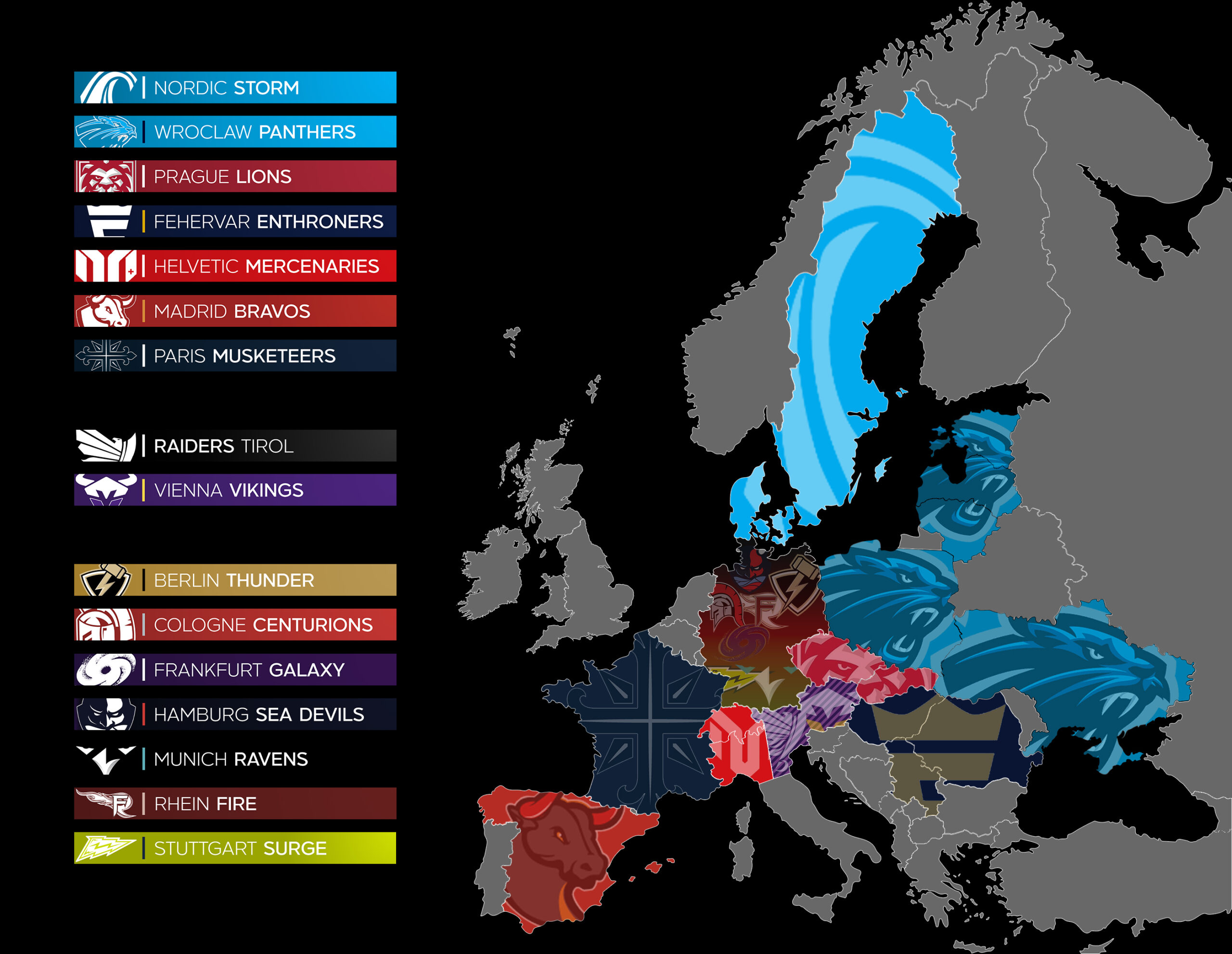The European League of Football and our perspective
We (Maria Elena and Roman) are photographers and have been on the sidelines of the European League of Football for 3 years. Not only do we have a special perspective, we have also become fans of the league. So we are also interested in what happens in the league. That’s why we’ve created this page, which is all about the ELF from our point of view, even if the picture is always in the foreground.
The European League of Football
The European League of Football (ELF) will start its fifth season on May 17, 2025. Sixteen teams from nine different countries will take part. The season will end with the ELF Championship Game in the MHPArena in Stuttgart on September 7, 2025.
The 16 teams are divided into four divisions of four teams each. Each team plays 12 games during the regular season, six in its own division and two games against teams from the other divisions. Most of the players on a team must come from the team’s home country. Players from Estonia, Latvia, Lithuania and Ukraine also count as “homegrown” players for the Panthers Wrocław, players from Slovakia for the Prague Lions and players from Romania and Serbia for the Fehérvár Enthroners. Players from western northern Italy count as “homegrown” for the Helvetic Mercenaries, while those from eastern northern Italy count for the two Austrian franchises.
Of the 17 teams in the 2024 season, 15 teams will take part in the 2025 season. In addition, there is the new Nordic Storm team. The Barcelona Dragons and the Milano Seamen will not take part in the new season, with the Milano Seamen taking a break and planning to return to the league in 2026.
Unser Powerranking
1

2

3

4

5

6

7

8

9

10

11

12

13

14

15

16

Homegrown Territories 2025
- Wrocław Panthers: Poland, Ukraine, Lithuania, Latvia, Estonia
- Prague Lions: Czech Republic, Slovakia
- Fehérvár Enthroners: Hungary, Romania, Serbia
- Nordic Storm: Denmark, Sweden
- Vienna Vikings: Austria, East-North Italy
- Raiders Tirol: Austria, East-North Italy
- Helvetic Mercenaries: Switzerland, Western Northern Italy
- Madrid Bravos: Spain
- Paris Musketeers: France
- Berlin Thunder: Germany
- Cologne Centurions: Germany
- Frankfurt Galaxy: Germany
- Hamburg Sea Devils: Germany
- Munich Ravens: Germany
- Rhein Fire: Germany
- Stuttgart Surge: Germany
Salary caps and management composition in the ELF
As you can imagine, putting together a squad in the European League of Football (ELF) is a real challenge. Each team is allowed to have a maximum of 53 players in the squad, plus another 12 in the practice squad. But here’s where it gets interesting: there are strict rules regarding the number of foreign players. Each team may have a maximum of four players from the USA, Canada, Mexico or Japan (the so-called A players) and a certain number of other foreign players. This number has been steadily reduced in recent years: from ten in 2021 to six in 2023. Brazilian players now also count as e-imports.
The salary structure
The ELF has a salary cap for all franchises, which is divided into three salary groups. Up to eight players, including the four A import spots, receive a full-time salary. For American import players, this salary can range from 600 to 3,000 euros per month. The second group consists of four transition players (international or domestic) with a part-time salary. All other players fall into the domestic salary group with part-time employment and a monthly income of between 100 and 450 euros.
Additional services
All players under contract receive health insurance and participate in the state pension scheme. Other benefits such as accommodation and meals during the season have to be negotiated individually. That sounds like a fair deal, doesn’t it?
Rules for A imports
The rules for A-imports are clearly defined. A-imports are players who started playing American football in countries with college football. These include the USA, Canada, Japan and Mexico. Most A-imports in the history of the ELF have come from the USA.


